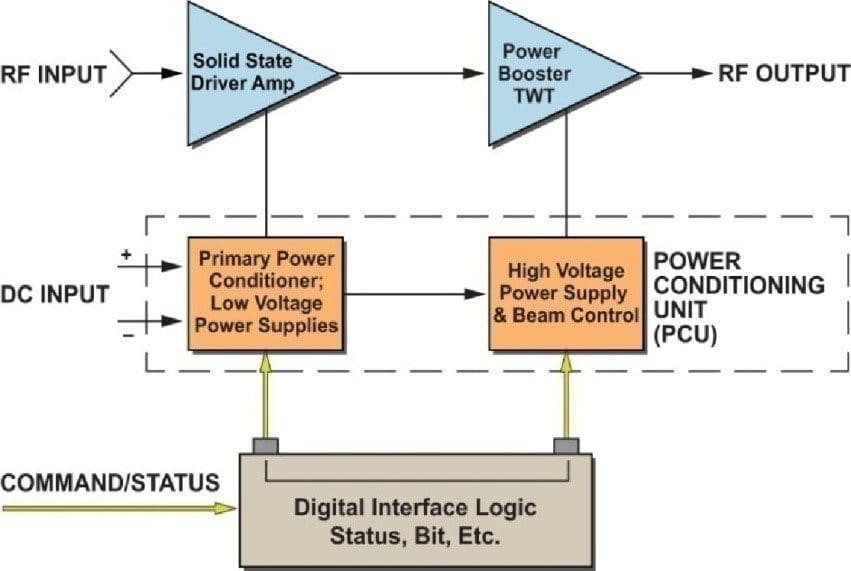The microwave power module (MPM) concept was initiated by the US military. The Tri-Service (Army, Navy, Air Force) officially launched the MPM program in 1991 – with the Naval Research Laboratory as the primary program office. Most TWT companies were given development contracts at that time. The objective? To give a boost to the microwave tube development effort in the US. And to combine the best uses of both vacuum electronics and solid state technologies.
What’s an MPM?
The MPM is a very compact microwave power amplifier. One of the goals of the MPM program was to design standardized modules for multiple applications. Additionally, the frequency bands were supposed to be very generic (i.e., 2 to 6 GHz, 6 to 18 GHz, 18 to 26 GHz, 26 to 40 GHz). For narrowband radar and communication applications, another set of designs were contemplated.

How MPMs Were Developed
One of the MPM’s signature features is the use of complementary technologies. To achieve wide bandwidth over multi-octave frequency band, the design choice is a helix traveling wave tube (TWT). Operation of the TWT requires high voltage levels, so a high-voltage power supply (HVPS) is an essential necessity for an amplifier using a TWT. However, the TWT and the HVPS are large devices. Most MPM development efforts focused on downsizing the TWT and the HVPS. A mini-booster TWT was selected as the amplifying device due to lower operating voltage levels.
Gain of a helix TWT depends on the length of the helix section consisting of the RF input section, sever and an output section. The input section is the largest, and provides most of the signal amplification. The sever provides isolation from between the input and output. The output section provides the power amplification with relatively low gain.
More on TWT size reduction in Part 2.


